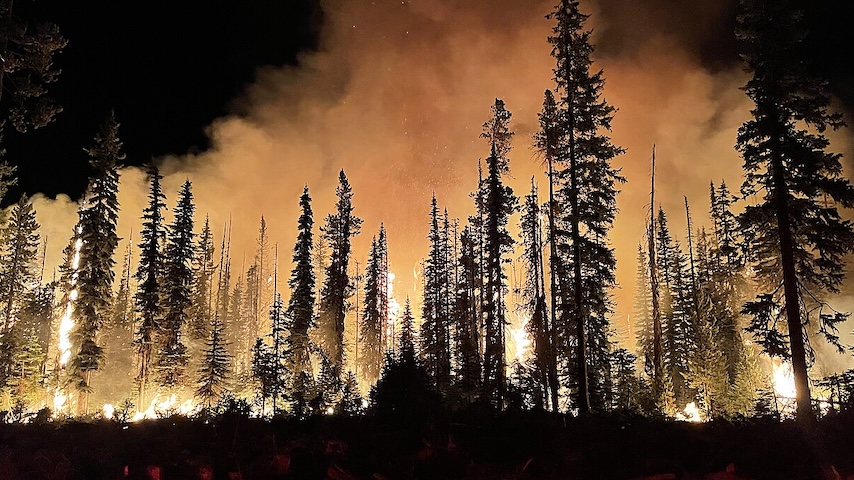Climate Change 2024: The Year In ‘It Gets Worse’
Photo by U.S. Forest Service-Pacific Northwest Region/Wikimedia Commons
Look, almost any year-in-review of climate change-related stuff is going to be a bit of a downer (we’ll get to the one that isn’t later in the week). So far, we’ve looked at the year in disasters, and also the year in the industry that has helped make them worse, big oil — today is no different, as we take a look at some of the indicators and science that emerged from the warming muck in 2024 to tell us that yes, actually, the thing that is kind of a huge negative to begin with is actually getting worse and worse.
As that disasters review noted, this was a pretty awful year for hurricanes — not just Helene, but Milton, and Debby, and typhoons halfway around the globe like Shanshan, or the recent storm that devastated Mayotte. And as it turns out, the average hurricane really is getting worse thanks to climate change: a study in November found that storms over the past five years have added more than 18 mph in wind speed compared to previous years, enough to make some storms jump a Saffir-Simpson category and, obviously, juice their damage potential by no small amount.
Other types of climate disaster are faring no better. Take wildfires: Not only are fire seasons overall getting worse, with more acres burned, but there is now something actually termed “fast fires” that pose potentially the biggest threat. As warming has progressed, fires that explode in size in just a day or so have gotten more likely, with obvious increases to risk — less time to get out of the way. “With warming temperatures increasing the likelihood of wildfires across the US, we would expect to see more fast fire events in the future,” authors of an October study wrote.
The most viscerally obvious form of climate change-related death, though, is from heat — and that’s getting worse too. Counterintuitively, heat deaths in the US actually were decreasing slightly for the first 16 years of this century, perhaps thanks to increasing awareness of the risk, improved air conditioning or public health outreach, or some combination of these and other factors. Then that stopped: a study published in August showed that starting in 2016, heat-related mortality jumped by a remarkable 17 percent each year through 2023. This is, unfortunately, a trend that is likely to continue.
The longer-term climate issues are also looking grim. 2023 was maybe more of a Bad Ice Year when it come to research on the teetering state of the ice sheets, but 2024 had its own offerings: in June, researchers with the British Antarctic Survey revealed that the “grounding zone” between floating ice and bedrock at the Thwaites Glacier — aka the Doomsday Glacier — is changing in ways that make a “runaway melting” more likely. We don’t know exactly when this tipping point might be passed, and it could still be decades or longer, but it isn’t looking good.
Later in the summer, an international team focused on Thwaites met to offer a thorough, and thoroughly disturbing, update. They said the glacier, which alone would add two feet to sea level rise and also acts as a buffer holding back a huge chunk of the West Antarctic ice sheet, will see a significantly accelerating retreat within a century. Only, there are still some things we don’t have fully modeled or understood, and they “could cause retreat to accelerate sooner.” Which is exciting.
Finally, to the emissions themselves, the carbon humans stubbornly keep pumping into the atmosphere that in turn takes all these climate-related processes and impacts and makes them, year by year, worse. They’re not getting better either.
We are, obviously, well within the time frame when global emissions need to be dropping, rapidly, on the way to 2030 and then 2050 goals set by almost every country on Earth. Instead: the Global Carbon Project found in November that 2025 emissions will likely go up yet again, with a best guess being that they will rise by a bit less than one percent. There were some (very) minor bright spots, like the possibility that China, the world’s biggest emitter by a long shot, may finally sniff at an emissions decline, but we are still, quite clearly, well behind schedule.
So, yes — there aren’t many things in the climate realm that, when reports or studies delve into them, come up smelling better than we previously thought. But there are some things. Later in the week, for our last look at climate change in 2024: the year in progress.